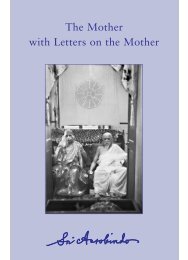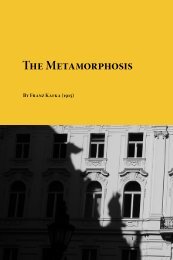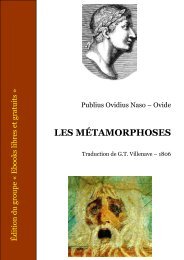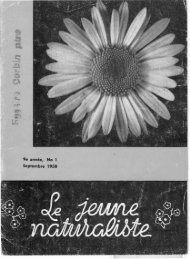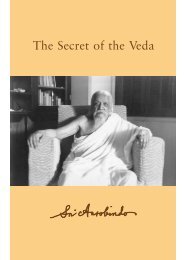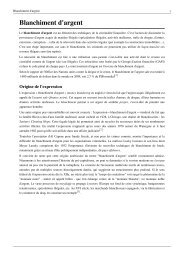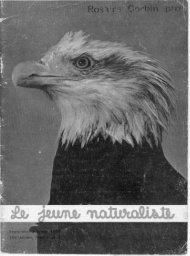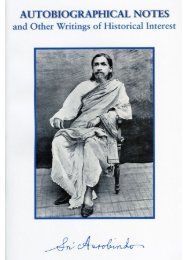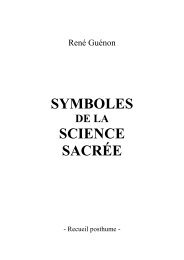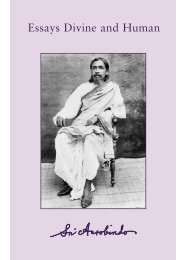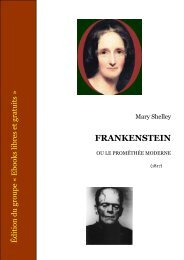- Page 1 and 2:
Collected Poems
- Page 3 and 4:
Collected Poems
- Page 6 and 7:
CONTENTS Part One England and Barod
- Page 8 and 9:
CONTENTS A Thing Seen 187 Epitaph 1
- Page 10 and 11:
Part Five Pondicherry, c. 1910 - 19
- Page 12 and 13:
CONTENTS The Silver Call 594 Evolut
- Page 14 and 15:
CONTENTS Krishna 637 The Cosmic Man
- Page 16:
Sri Aurobindo in 1950
- Page 20:
Poem Published in 1883
- Page 23 and 24:
6 England and Baroda, 1883 - 1898 E
- Page 26 and 27:
GLAUCUS Songs to Myrtilla Sweet is
- Page 28 and 29:
Songs to Myrtilla 11 A green retrea
- Page 30 and 31:
Songs to Myrtilla 13 And praise her
- Page 32 and 33:
Songs to Myrtilla 15 Lovelier girl
- Page 34 and 35:
Songs to Myrtilla 17 Charles Stewar
- Page 36 and 37:
Songs to Myrtilla 19 Thy vehement n
- Page 38 and 39:
Songs to Myrtilla 21 So falls it ev
- Page 40 and 41:
Songs to Myrtilla 23 Night by the S
- Page 42 and 43:
Songs to Myrtilla 25 Are we more th
- Page 44 and 45:
Songs to Myrtilla 27 O plaintive, m
- Page 46 and 47:
Songs to Myrtilla 29 For we were st
- Page 48 and 49:
Songs to Myrtilla 31 Ushers the fir
- Page 50 and 51:
Songs to Myrtilla 33 About thy feet
- Page 52 and 53:
Songs to Myrtilla 35 In large seren
- Page 54:
Songs to Myrtilla 37 Envoi Ite hinc
- Page 58 and 59:
To a Hero-Worshipper I My life is t
- Page 60 and 61:
Poems from Manuscripts 43 Is it for
- Page 62:
Incomplete Poems from Manuscripts C
- Page 65 and 66:
48 England and Baroda, 1883 - 1898
- Page 67 and 68:
50 England and Baroda, 1883 - 1898
- Page 69 and 70:
52 England and Baroda, 1883 - 1898
- Page 71 and 72:
54 England and Baroda, 1883 - 1898
- Page 73 and 74:
56 England and Baroda, 1883 - 1898
- Page 75 and 76:
58 England and Baroda, 1883 - 1898
- Page 78:
Part Two Baroda Circa 1898 - 1902
- Page 82:
Urvasie
- Page 85 and 86:
68 Baroda, c. 1898 - 1902 The golde
- Page 87 and 88:
70 Baroda, c. 1898 - 1902 Unveil th
- Page 89 and 90:
72 Baroda, c. 1898 - 1902 Rushed wi
- Page 91 and 92:
74 Baroda, c. 1898 - 1902 That unde
- Page 93 and 94:
76 Baroda, c. 1898 - 1902 So curvin
- Page 95 and 96:
78 Baroda, c. 1898 - 1902 For not o
- Page 97 and 98:
80 Baroda, c. 1898 - 1902 Though ch
- Page 99 and 100:
82 Baroda, c. 1898 - 1902 Whence wi
- Page 101 and 102:
84 Baroda, c. 1898 - 1902 And over
- Page 103 and 104:
86 Baroda, c. 1898 - 1902 Youth and
- Page 105 and 106:
88 Baroda, c. 1898 - 1902 With the
- Page 107 and 108:
90 Baroda, c. 1898 - 1902 And in st
- Page 109 and 110:
92 Baroda, c. 1898 - 1902 As our br
- Page 111 and 112:
94 Baroda, c. 1898 - 1902 And raise
- Page 113 and 114:
96 Baroda, c. 1898 - 1902 “This i
- Page 115 and 116:
98 Baroda, c. 1898 - 1902 And shone
- Page 117 and 118:
100 Baroda, c. 1898 - 1902 Expectin
- Page 119 and 120:
102 Baroda, c. 1898 - 1902 Froze in
- Page 121 and 122:
104 Baroda, c. 1898 - 1902 But the
- Page 123 and 124:
106 Baroda, c. 1898 - 1902 Grew to
- Page 125 and 126:
108 Baroda, c. 1898 - 1902 Destined
- Page 128:
Love and Death
- Page 131 and 132:
114 Baroda, c. 1898 - 1902 Sweetest
- Page 133 and 134:
116 Baroda, c. 1898 - 1902 Went hom
- Page 135 and 136:
118 Baroda, c. 1898 - 1902 And life
- Page 137 and 138:
120 Baroda, c. 1898 - 1902 Therefor
- Page 139 and 140:
122 Baroda, c. 1898 - 1902 Upon his
- Page 141 and 142:
124 Baroda, c. 1898 - 1902 “I kno
- Page 143 and 144:
126 Baroda, c. 1898 - 1902 The love
- Page 145 and 146:
128 Baroda, c. 1898 - 1902 The shad
- Page 147 and 148:
130 Baroda, c. 1898 - 1902 By Aryan
- Page 149 and 150:
132 Baroda, c. 1898 - 1902 Lost in
- Page 151 and 152:
134 Baroda, c. 1898 - 1902 A mighty
- Page 153 and 154:
136 Baroda, c. 1898 - 1902 Their bo
- Page 155 and 156:
138 Baroda, c. 1898 - 1902 Still ba
- Page 157 and 158:
140 Baroda, c. 1898 - 1902 The horr
- Page 159 and 160:
A NOTE ON LOVE AND DEATH The story
- Page 162:
Khaled of the Sea an Arabian romanc
- Page 165 and 166:
148 Baroda, c. 1898 - 1902 The Arab
- Page 167 and 168:
150 Baroda, c. 1898 - 1902 The tigr
- Page 169 and 170:
152 Baroda, c. 1898 - 1902 About my
- Page 171 and 172:
154 Baroda, c. 1898 - 1902 His cry
- Page 173 and 174:
156 Baroda, c. 1898 - 1902 Followin
- Page 175 and 176:
CANTO I The Story of Almaimun and t
- Page 177 and 178:
160 Baroda, c. 1898 - 1902 From Bag
- Page 179 and 180:
162 Baroda, c. 1898 - 1902 Proscrib
- Page 182 and 183:
CANTO I Under the high and gloomy e
- Page 184 and 185:
Uloupie 167 “What wast thou musin
- Page 186 and 187:
Uloupie 169 Leaving tremendous seat
- Page 188 and 189:
Uloupie 171 Ere all is over; for th
- Page 190:
Uloupie 173 Of the wide court and e
- Page 194 and 195:
O face that I have loved O face tha
- Page 196 and 197:
Sonnets 179 Because thy flame is sp
- Page 198 and 199:
Sonnets 181 Still there is somethin
- Page 200:
Short Poems from Manuscripts Circa
- Page 203 and 204:
186 Baroda, c. 1898 - 1902 There ar
- Page 205 and 206:
188 Baroda, c. 1898 - 1902 Epitaph
- Page 207 and 208:
190 Baroda, c. 1898 - 1902 When bou
- Page 209 and 210:
192 Baroda, c. 1898 - 1902 Since I
- Page 211 and 212:
194 Baroda, c. 1898 - 1902 World’
- Page 214:
Part Three Baroda and Bengal Circa
- Page 218 and 219:
Invitation With wind and the weathe
- Page 220 and 221:
Poems from Ahana and Other Poems 20
- Page 222 and 223:
Poems from Ahana and Other Poems 20
- Page 224 and 225:
Poems from Ahana and Other Poems 20
- Page 226 and 227:
Poems from Ahana and Other Poems 20
- Page 228 and 229:
Poems from Ahana and Other Poems 21
- Page 230 and 231:
Poems from Ahana and Other Poems 21
- Page 232 and 233:
Poems from Ahana and Other Poems 21
- Page 234 and 235:
Poems from Ahana and Other Poems 21
- Page 236 and 237:
Poems from Ahana and Other Poems 21
- Page 238 and 239:
Poems from Ahana and Other Poems 22
- Page 240 and 241:
Poems from Ahana and Other Poems 22
- Page 242 and 243:
Poems from Ahana and Other Poems 22
- Page 244 and 245:
Poems from Ahana and Other Poems 22
- Page 246 and 247:
Poems from Ahana and Other Poems 22
- Page 248 and 249:
Poems from Ahana and Other Poems 23
- Page 250 and 251:
Poems from Ahana and Other Poems 23
- Page 252 and 253:
Poems from Ahana and Other Poems 23
- Page 254 and 255:
Poems from Ahana and Other Poems 23
- Page 256 and 257:
Poems from Ahana and Other Poems 23
- Page 258 and 259:
Poems from Ahana and Other Poems 24
- Page 260 and 261:
Poems from Ahana and Other Poems 24
- Page 262:
Poems from Manuscripts Circa 1900 -
- Page 265 and 266:
248 Baroda and Bengal, c. 1900 - 19
- Page 267 and 268:
250 Baroda and Bengal, c. 1900 - 19
- Page 269 and 270:
252 Baroda and Bengal, c. 1900 - 19
- Page 271 and 272:
254 Baroda and Bengal, c. 1900 - 19
- Page 273 and 274:
256 Baroda and Bengal, c. 1900 - 19
- Page 275 and 276:
258 Baroda and Bengal, c. 1900 - 19
- Page 277 and 278:
260 Baroda and Bengal, c. 1900 - 19
- Page 280:
Part Four Calcutta and Chandernagor
- Page 284 and 285:
Reflections of Srinath Paul, Rai Ba
- Page 286 and 287:
Reflections of Srinath Paul 269 No,
- Page 288:
Short Poems Published in 1909 and 1
- Page 291 and 292:
274 Calcutta and Chandernagore, 190
- Page 293 and 294:
276 Calcutta and Chandernagore, 190
- Page 295 and 296:
278 Calcutta and Chandernagore, 190
- Page 297 and 298:
280 Calcutta and Chandernagore, 190
- Page 299 and 300:
282 Calcutta and Chandernagore, 190
- Page 302 and 303:
Perfect thy motion Perfect thy moti
- Page 304 and 305:
ACHAB Poems from Manuscripts 287 An
- Page 306 and 307:
ESARHADDON Poems from Manuscripts 2
- Page 308:
Narrative Poems Published in 1910
- Page 312 and 313:
Baji Prabhou A noon of Deccan with
- Page 314 and 315:
Baji Prabhou 297 The Bhonsle names
- Page 316 and 317:
Baji Prabhou 299 Yet resolute to br
- Page 318 and 319:
Baji Prabhou 301 The heads that pla
- Page 320 and 321:
Baji Prabhou 303 “Exhaust the stu
- Page 322 and 323:
Baji Prabhou 305 Yet careful of pre
- Page 324 and 325:
Baji Prabhou 307 The trumpets.” C
- Page 326:
Chitrangada
- Page 329 and 330:
312 Calcutta and Chandernagore, 190
- Page 331 and 332:
314 Calcutta and Chandernagore, 190
- Page 333 and 334:
316 Calcutta and Chandernagore, 190
- Page 336:
Poems Written in 1910 and Published
- Page 339 and 340:
322 Calcutta and Chandernagore, 190
- Page 341 and 342:
324 Calcutta and Chandernagore, 190
- Page 343 and 344:
326 Calcutta and Chandernagore, 190
- Page 345 and 346:
328 Calcutta and Chandernagore, 190
- Page 348:
Two Poems in Quantitative Hexameter
- Page 352 and 353:
BOOK I The Book of the Herald Dawn
- Page 354 and 355:
Ilion - Book I 337 “Wardens charg
- Page 356 and 357:
Ilion - Book I 339 Dumb and coerced
- Page 358 and 359:
Ilion - Book I 341 Vague like a pha
- Page 360 and 361:
Ilion - Book I 343 Seeking a mortal
- Page 362 and 363:
Ilion - Book I 345 Son of the ancie
- Page 364 and 365:
Ilion - Book I 347 Shaking in wrath
- Page 366 and 367:
Ilion - Book I 349 High, insistent,
- Page 368 and 369:
Ilion - Book I 351 I shall go warri
- Page 370 and 371:
Ilion - Book I 353 Perishes hurt in
- Page 372 and 373:
BOOK II The Book of the Statesman N
- Page 374 and 375:
Ilion - Book II 357 Dropped like a
- Page 376 and 377:
Ilion - Book II 359 Less in his bui
- Page 378 and 379:
Ilion - Book II 361 Conquering men
- Page 380 and 381:
Ilion - Book II 363 Still you need
- Page 382 and 383:
Ilion - Book II 365 Bartered her to
- Page 384 and 385:
Ilion - Book II 367 O that alone th
- Page 386 and 387:
Ilion - Book II 369 He as yet rose
- Page 388:
A page of Illion
- Page 391 and 392:
372 Pondicherry, c. 1910 - 1920 Vil
- Page 393 and 394:
374 Pondicherry, c. 1910 - 1920 The
- Page 395 and 396:
376 Pondicherry, c. 1910 - 1920 Tro
- Page 397 and 398:
378 Pondicherry, c. 1910 - 1920 Why
- Page 399 and 400:
380 Pondicherry, c. 1910 - 1920 Who
- Page 401 and 402:
382 Pondicherry, c. 1910 - 1920 Men
- Page 403 and 404:
384 Pondicherry, c. 1910 - 1920 Res
- Page 405 and 406:
386 Pondicherry, c. 1910 - 1920 Tro
- Page 407 and 408:
388 Pondicherry, c. 1910 - 1920 Fie
- Page 409 and 410:
390 Pondicherry, c. 1910 - 1920 Eve
- Page 411 and 412:
392 Pondicherry, c. 1910 - 1920 War
- Page 413 and 414:
394 Pondicherry, c. 1910 - 1920 “
- Page 415 and 416:
396 Pondicherry, c. 1910 - 1920 Yea
- Page 417 and 418:
398 Pondicherry, c. 1910 - 1920 So
- Page 419 and 420:
400 Pondicherry, c. 1910 - 1920 See
- Page 421 and 422:
402 Pondicherry, c. 1910 - 1920 Woe
- Page 423 and 424:
404 Pondicherry, c. 1910 - 1920 She
- Page 425 and 426:
406 Pondicherry, c. 1910 - 1920 Thi
- Page 427 and 428:
408 Pondicherry, c. 1910 - 1920 Rat
- Page 429 and 430:
410 Pondicherry, c. 1910 - 1920 Arm
- Page 431 and 432:
412 Pondicherry, c. 1910 - 1920 “
- Page 433 and 434:
414 Pondicherry, c. 1910 - 1920 Far
- Page 435 and 436:
416 Pondicherry, c. 1910 - 1920 So
- Page 437 and 438:
418 Pondicherry, c. 1910 - 1920 Arg
- Page 439 and 440:
BOOK VI The Book of the Chieftains
- Page 441 and 442:
422 Pondicherry, c. 1910 - 1920 Or
- Page 443 and 444:
424 Pondicherry, c. 1910 - 1920 Who
- Page 445 and 446:
426 Pondicherry, c. 1910 - 1920 Sha
- Page 447 and 448:
428 Pondicherry, c. 1910 - 1920 But
- Page 449 and 450:
430 Pondicherry, c. 1910 - 1920 See
- Page 451 and 452:
432 Pondicherry, c. 1910 - 1920 Aft
- Page 453 and 454:
434 Pondicherry, c. 1910 - 1920 Dra
- Page 455 and 456:
436 Pondicherry, c. 1910 - 1920 New
- Page 457 and 458:
438 Pondicherry, c. 1910 - 1920 Nay
- Page 459 and 460:
440 Pondicherry, c. 1910 - 1920 But
- Page 461 and 462:
BOOK VIII The Book of the Gods So o
- Page 463 and 464:
444 Pondicherry, c. 1910 - 1920 Cal
- Page 465 and 466:
446 Pondicherry, c. 1910 - 1920 Gle
- Page 467 and 468:
448 Pondicherry, c. 1910 - 1920 You
- Page 469 and 470:
450 Pondicherry, c. 1910 - 1920 Far
- Page 471 and 472:
452 Pondicherry, c. 1910 - 1920 Eve
- Page 473 and 474:
454 Pondicherry, c. 1910 - 1920 But
- Page 475 and 476:
456 Pondicherry, c. 1910 - 1920 Car
- Page 477 and 478:
458 Pondicherry, c. 1910 - 1920 Gui
- Page 479 and 480:
460 Pondicherry, c. 1910 - 1920 Hel
- Page 481 and 482:
462 Pondicherry, c. 1910 - 1920 The
- Page 483 and 484:
BOOK IX Meanwhile moved by their un
- Page 485 and 486:
466 Pondicherry, c. 1910 - 1920 Bit
- Page 487 and 488:
468 Pondicherry, c. 1910 - 1920 Now
- Page 489 and 490:
470 Pondicherry, c. 1910 - 1920 Ar
- Page 491 and 492:
472 Pondicherry, c. 1910 - 1920 Ye,
- Page 494:
Ahana
- Page 497 and 498:
478 Pondicherry, c. 1910 - 1920 Hea
- Page 499 and 500:
480 Pondicherry, c. 1910 - 1920 Man
- Page 501 and 502:
482 Pondicherry, c. 1910 - 1920 Stu
- Page 503 and 504:
484 Pondicherry, c. 1910 - 1920 Lif
- Page 505 and 506:
486 Pondicherry, c. 1910 - 1920 Wer
- Page 507 and 508:
488 Pondicherry, c. 1910 - 1920 Eve
- Page 509 and 510:
490 Pondicherry, c. 1910 - 1920 Bod
- Page 512:
Poems from Manuscripts Circa 1912 -
- Page 515 and 516:
496 Pondicherry, c. 1910 - 1920 But
- Page 517 and 518:
498 Pondicherry, c. 1910 - 1920 AHA
- Page 519 and 520:
500 Pondicherry, c. 1910 - 1920 The
- Page 521 and 522:
502 Pondicherry, c. 1910 - 1920 Nai
- Page 523 and 524:
504 Pondicherry, c. 1910 - 1920 AHA
- Page 525 and 526:
506 Pondicherry, c. 1910 - 1920 Alw
- Page 527 and 528:
508 Pondicherry, c. 1910 - 1920 Sha
- Page 529 and 530:
510 Pondicherry, c. 1910 - 1920 Rej
- Page 531 and 532:
512 Pondicherry, c. 1910 - 1920 Can
- Page 533 and 534:
514 Pondicherry, c. 1910 - 1920 And
- Page 536:
Incomplete Poems from Manuscripts C
- Page 539 and 540:
520 Pondicherry, c. 1910 - 1920 See
- Page 541 and 542:
522 Pondicherry, c. 1910 - 1920 His
- Page 543 and 544:
524 Pondicherry, c. 1910 - 1920 Thr
- Page 545 and 546:
526 Pondicherry, c. 1910 - 1920 Hea
- Page 548:
Poems Past and Present
- Page 551 and 552:
532 Baroda and Pondicherry, c. 1902
- Page 553 and 554:
534 Baroda and Pondicherry, c. 1902
- Page 555 and 556:
536 Baroda and Pondicherry, c. 1902
- Page 557 and 558:
538 Baroda and Pondicherry, c. 1902
- Page 559 and 560:
540 Baroda and Pondicherry, c. 1902
- Page 561 and 562:
542 Baroda and Pondicherry, c. 1902
- Page 564:
Six Poems
- Page 567 and 568:
548 Pondicherry, c. 1927 - 1947 Tra
- Page 569 and 570:
550 Pondicherry, c. 1927 - 1947 All
- Page 571 and 572:
552 Pondicherry, c. 1927 - 1947 A P
- Page 573 and 574:
NOTES (From Letters of the Author)
- Page 575 and 576:
556 Pondicherry, c. 1927 - 1947 THE
- Page 577 and 578:
558 Pondicherry, c. 1927 - 1947 Hor
- Page 580 and 581:
Transformation My breath runs in a
- Page 582 and 583:
Poems 563 Crimson-white mooned ocea
- Page 584 and 585:
NOTE In some of these poems, as in
- Page 586 and 587:
or again, from Shakespeare’s pros
- Page 588:
Poems 569 Ro | se of | Go | d, | da
- Page 592 and 593:
Ocean Oneness Silence is round me,
- Page 594 and 595:
Poems Published in On Quantitative
- Page 596 and 597:
Poems Published in On Quantitative
- Page 598 and 599:
Poems Published in On Quantitative
- Page 600 and 601:
Poems Published in On Quantitative
- Page 602:
Poems Published in On Quantitative
- Page 606:
Three Sonnets
- Page 609 and 610:
590 Pondicherry, c. 1927 - 1947 The
- Page 612 and 613:
Man the Thinking Animal A trifling
- Page 614 and 615:
Sonnets 595 The Call of the Impossi
- Page 616 and 617:
Sonnets 597 All here is Spirit All
- Page 618 and 619:
Sonnets 599 The Yogi on the Whirlpo
- Page 620 and 621:
Sonnets 601 The Indwelling Universa
- Page 622 and 623:
Sonnets 603 The Pilgrim of the Nigh
- Page 624 and 625:
Sonnets 605 Life-Unity I housed wit
- Page 626 and 627:
Sonnets 607 The Universal Incarnati
- Page 628 and 629:
Sonnets 609 Shiva On the white summ
- Page 630 and 631:
Sonnets 611 Lila In us is the thous
- Page 632 and 633:
Sonnets 613 The Inner Sovereign Now
- Page 634 and 635:
Sonnets 615 TheLittleEgo This puppe
- Page 636 and 637:
Sonnets 617 The Body This body whic
- Page 638 and 639:
Sonnets 619 “I” This strutting
- Page 640 and 641:
Sonnets 621 The Inconscient Foundat
- Page 642 and 643:
Sonnets 623 Because Thou art Becaus
- Page 644 and 645:
Sonnets 625 Form O worshipper of th
- Page 646:
Sonnets 627 The Inner Fields There
- Page 650 and 651:
Symbol Moon Once again thou hast cl
- Page 652 and 653:
Lyrical Poems 633 The earth’s see
- Page 654 and 655:
Lyrical Poems 635 Who art thou that
- Page 656 and 657:
Lyrical Poems 637 Krishna (Cretics)
- Page 658 and 659:
Lyrical Poems 639 Despair on the St
- Page 660 and 661:
Lyrical Poems 641 That looms across
- Page 662 and 663:
Lyrical Poems 643 And the laughter
- Page 664:
Lyrical Poems 645 4 How shalt thou
- Page 668 and 669:
O pall of black Night O pall of bla
- Page 670 and 671:
Metrical Experiments 651 O Life, th
- Page 672: Metrical Experiments 653 On the gre
- Page 676 and 677: A Ballad of Doom There was an awful
- Page 678 and 679: Nonsense and “Surrealist” Verse
- Page 680: Incomplete Poems from Manuscripts C
- Page 683 and 684: 664 Pondicherry, c. 1927 - 1947 Out
- Page 685 and 686: 666 Pondicherry, c. 1927 - 1947 All
- Page 687 and 688: 668 Pondicherry, c. 1927 - 1947 O b
- Page 689 and 690: 670 Pondicherry, c. 1927 - 1947 A s
- Page 691 and 692: 672 Pondicherry, c. 1927 - 1947 Wha
- Page 693 and 694: 674 Pondicherry, c. 1927 - 1947 THE
- Page 695 and 696: 676 Pondicherry, c. 1927 - 1947 O y
- Page 697 and 698: 678 Pondicherry, c. 1927 - 1947 Sou
- Page 699 and 700: 680 Pondicherry, c. 1927 - 1947 Her
- Page 702: Appendix Poems in Greek and in Fren
- Page 705 and 706: 686 Appendix Lorsque rien n’exist
- Page 708: Note on the Texts
- Page 711 and 712: 692 Collected Poems in London, Camb
- Page 713 and 714: 694 Collected Poems from the manusc
- Page 715 and 716: 696 Collected Poems Ye charming wer
- Page 717 and 718: 698 Collected Poems Thou didst mist
- Page 719 and 720: 700 Collected Poems Miracles. Circa
- Page 721: 702 Collected Poems he was the edit
- Page 725 and 726: 706 Collected Poems Karmayogin earl
- Page 727 and 728: 708 Collected Poems factors — the
- Page 729 and 730: 710 Collected Poems which this inco
- Page 731 and 732: 712 Collected Poems PART SEVEN: PON
- Page 733 and 734: 714 Collected Poems October 1933; i
- Page 735 and 736: 716 Collected Poems WORKS OF SRI AU
- Page 737 and 738: 718 Collected Poems Man the Thinkin
- Page 739 and 740: 720 Collected Poems handwritten man
- Page 741 and 742: 722 Collected Poems to “Cosmic Se
- Page 743 and 744: 724 Collected Poems Silence is all.
- Page 745 and 746: 726 Collected Poems journal Mother
- Page 747 and 748: 728 Collected Poems The Fire King a
- Page 749 and 750: 730 Collected Poems Sri Aurobindo
- Page 752 and 753: Index of Titles Adwaita 621 Ahana 4
- Page 754 and 755: Index of Titles 735 God to thy grea
- Page 756 and 757: Index of Titles 737 Lorsque rien n
- Page 758 and 759: Index of Titles 739 The Self’s In
- Page 760: Index of Titles 741 The Word of the
- Page 763 and 764: 744 Collected Poems Artist of cosmo
- Page 765 and 766: 746 Collected Poems I walked beside
- Page 767 and 768: 748 Collected Poems O Word conceale
- Page 769 and 770: 750 Collected Poems This strutting




